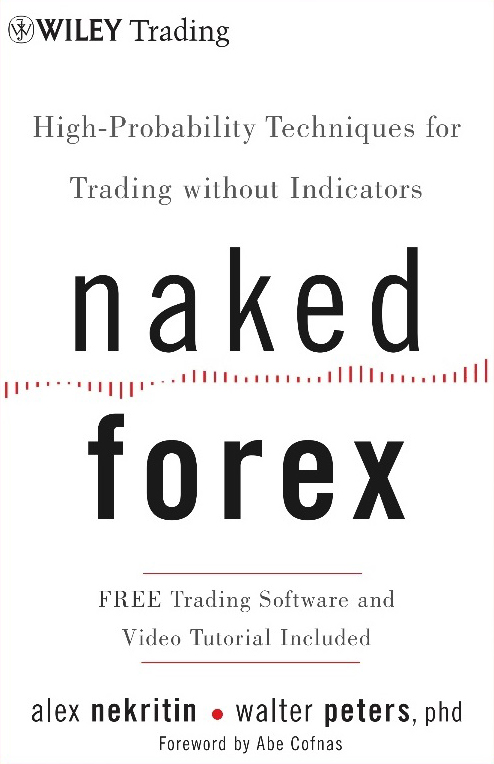Determining the entry point is extremely important for one's trade. Here's a complete guide on how to spot it based on price action entry rules.
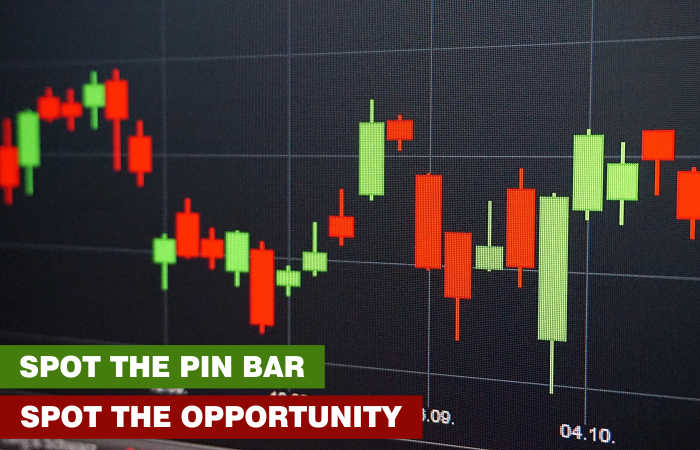
Entering the trade at the right moment surely can increase the odds of your trade and help you gain profit consistently. Having a predetermined entry point means that you won't enter the market blindly and make random moves.
Here we're going to introduce you to plan your steps in trading with candlestick patterns.
Step 1: Look for a Signal Bar
There are many powerful price action signals out there, but the pin bar is arguably the most common and reliable pattern that most traders follow. The pin bar or pinocchio bar is given its name because the signal is lying to the market or tricking the trader that the price is going one way when in fact it is reverting to the other way.
Thus, the pin bar is often seen as a trap. For traders who are aware of this, they can make a whole lot of money when the price does snap back the other way.
If you're going to use the pin bar, there are some particular rules that you need to follow. First, you must wait for a certain setup to come up and use it as the key entry point.
Once you set up a particular key entry point, you should watch out for a single candlestick that you're going to use as the signal bar. The signal bar will inform the right time to place the entry point, as you can use a break of this bar to make a trade.
The next rule that you must remember is that you don't enter the trade until the bar closes. Many traders would try to be clever and take a step ahead at this point by entering the market while the pin bar is still forming. This is clearly a bad choice because you wouldn't be able to know where the high or low is and not know where they will need to set your entry order.
Therefore, you must wait for it to close so that you can get confirmation that it is the correct bar and is indeed a signal bar. Once the signal bar closes, you would be able to work out where the high or low of the candle is and thus be able to proceed to the next step.
The following step would be to make sure that the candle next to the pin bar breaks through the low or high of the signal bar and thus triggers the trade. If for some reason, the price doesn't push through the end of the bar or even go in the opposite direction, then this entry might no longer be a good setup anymore.
The common mistake that traders often make is that they think the price has to close through the low of the candle just like the signal bar, but this is actually not the case.
The price does not have to close in the next candle, but it only has to move past the low or the high of the previous bar. Only then does the trade entry would be opened via a pending order, which we're going to discuss later.
Take a look at the illustration below. Notice that the signal bar is already closed, so the first step is done. Now for the next bar, you don't have to wait for it to close. As soon as the price pushes through the high or low of the pin bar, then it is confirmed and thus making a great entry point.
So keep in mind that the candle does not have to close, but it simply has to move past the high or low of the pin bar.
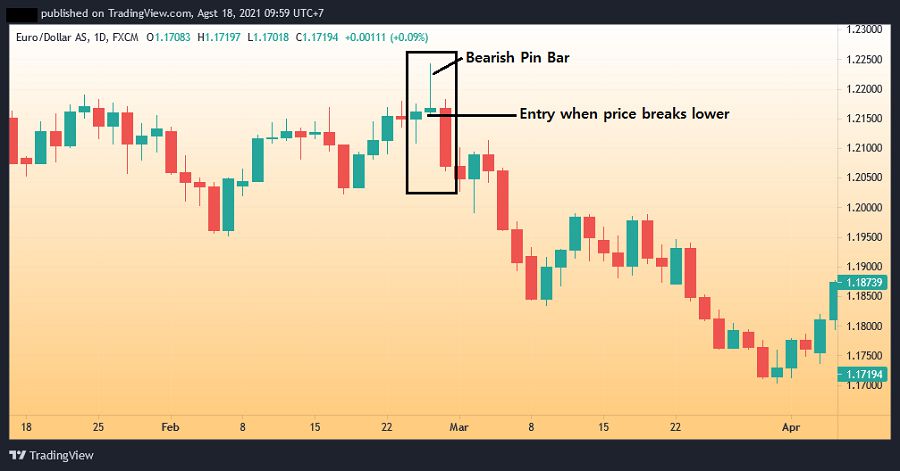
Using Bullish Engulfing Pattern
Other than the pin bar, you can also use other candlestick patterns. Take the engulfing bar, for instance. In the illustration below, the Bullish Engulfing Bar (BUEB) is already forming and closing.
Now you can use the method to determine their entries. In such scenario, what you would want to do is wait until the price confirms the BUEB and then moves above the BUEB's high before entering the market.
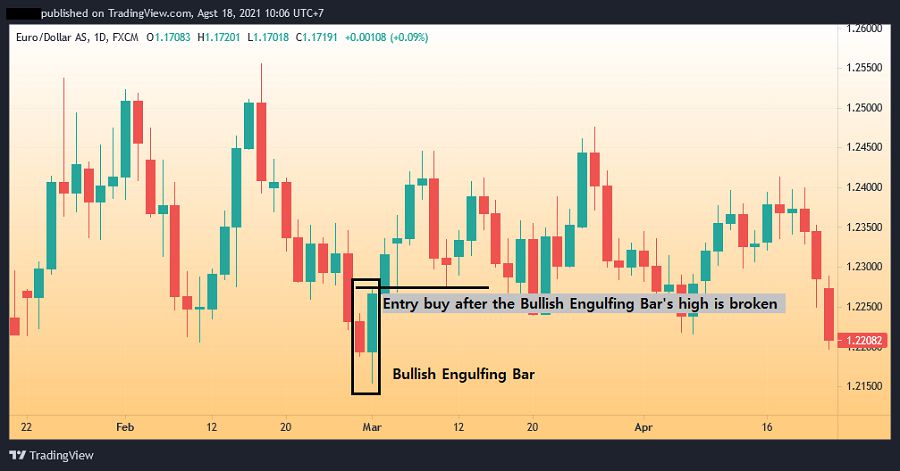
However, keep in mind that the price does not always confirm the price action signal, especially with reversal patterns such as the pin bar and engulfing bar. It can take some time for the price to build up the required conditions to push the price in the opposite direction to confirm the trade.
Step 2: Apply for Stop Orders
The best traders are supposed to let the market come to them and don't get stressed out when the price doesn't go the way they planned. As mentioned before, while the market provides opportunities at every second, not every second is the best time to trade and sometimes, the best time comes when you're not on your computer.
One of the valuable tools to overcome this issue is by using pending orders, which allows you to enter the trade or have your stops/profits executed for you even when you're not online.
If you use MetaTrader 4 or 5 as a trading platform, you will be able to use pending orders to enter the trade whilst at the same time determine your profit target and stop on the same trade.
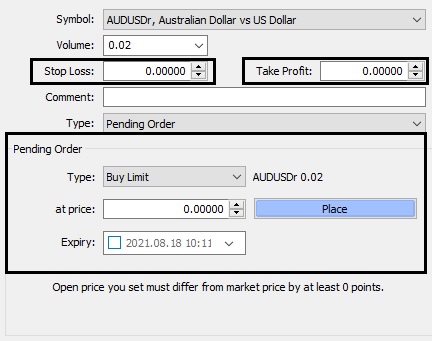
In this case, you can place the pending order to only open the trade after the price action signal is confirmed. Once the condition is met, you must find the high or low depending on whether the price action signal was bullish or bearish.
After that, sets the pending order. You will then place the pending order at a certain price to trigger a trade once the price moves above or below the price action signal bar.
Additionally, you can also set stops and targets for your trade whilst setting these pending orders. If you are not planning to put any targets, then you need to at least set stops in place. When setting orders to enter trades with pending orders, the order types to enter will always be stops.
If you are looking to go along with a pending order, you will be buying with a "buy stop" and if you're going to sell, then you will be selling with a "sell stop".
The Bottom Line
Having a profitable trading strategy alone is not enough to make consistent profits. You must make sure that you trade at the right time and know when to start as well as when to stop.
Also, don't forget to set a stop loss and target, and then determine if the reward outweighs the risk. If it does, take the risk. If it doesn't, might as well wait for another opportunity.
Determining an entry point by using price action is great because it's relatively simple yet effective to use in many trading strategies. It may take a while to get used to, but once you know how it works and gets accustomed to the steps, it will only take a short time to execute.
If this is your first time using the method, try testing it on a free demo account. That way, you can test the strategy while at the same time getting used to applying it on the platform without risking any money.

 Dedicated FREE FOREX VPS
Dedicated FREE FOREX VPS Free FOREX Virtual Private Server
Free FOREX Virtual Private Server MT4 Demo Contest, Get $500
MT4 Demo Contest, Get $500 Sign Up for an Account, Claim 60% Deposit Bonus
Sign Up for an Account, Claim 60% Deposit Bonus Free MT4/MT5 VPS 2024
Free MT4/MT5 VPS 2024 Send E-mail and Get Free Merchandise
Send E-mail and Get Free Merchandise $1K Refer a Friend Bonus for Pepperstone Pro clients
$1K Refer a Friend Bonus for Pepperstone Pro clients Maximize Your Earnings with 100% Deposit bonus
Maximize Your Earnings with 100% Deposit bonus Trade to Win, $5,000 Monthly Demo Contest
Trade to Win, $5,000 Monthly Demo Contest Claim 30% + 15% Deposit Bonus from LiteFinance
Claim 30% + 15% Deposit Bonus from LiteFinance












